In today’s dynamic world, art remains a continuous process—one that transcends boundaries and belongs to every individual. It is not limited to one person or one region; art is inherent by birth in every human being, regardless of their field.

The Boundless Nature of Art
Art is a continuous process which has no boundaries. It is not limited for one person or one region but for all individuals. Every human being, regardless of their profession or background, possesses the innate ability to create and appreciate art.
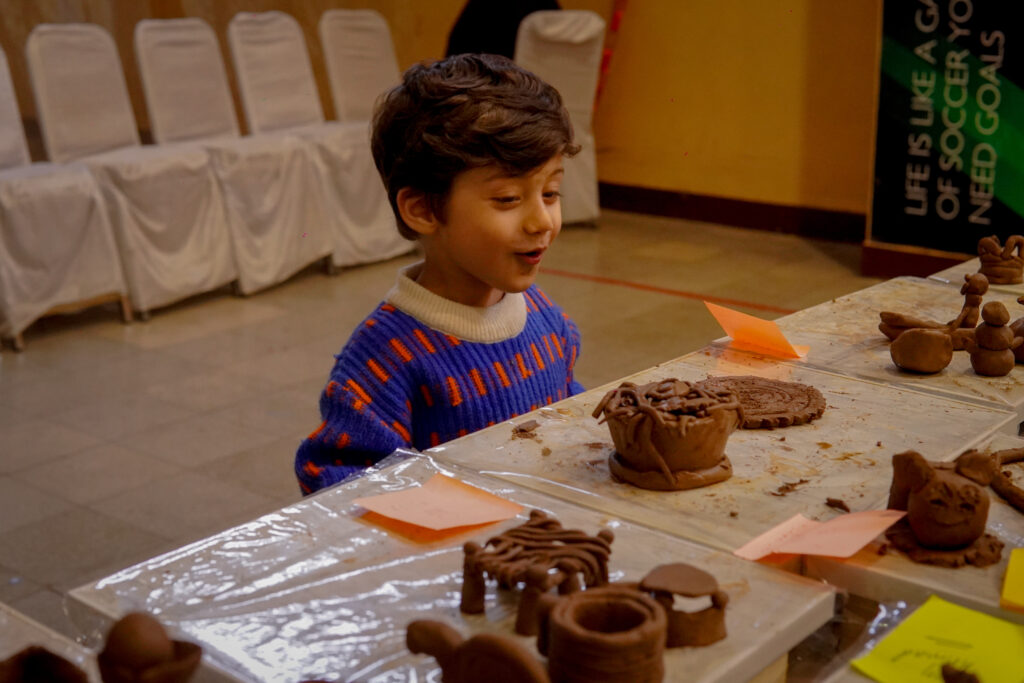
Miss Samina Mukhtiar emphasizes that art is fundamentally woven into our existence: It serves as a vital tool of communication. For those who struggle to express themselves in words, art becomes a natural way to communicate their inner emotions and feelings.
She says, “Art has strong relations with every field of life, for example, engineering, medical, architectural, textile, and more. Its universal nature enables individuals to express self-emotions and communicate feelings in a non-judgmental, safe environment.” In the medical field, art is especially valuable as a therapeutic medium, helping patients navigate states of emotional disturbance.
Art and Medicine: A Symbiotic Relationship
Miss Mukhtiar explains that art and medicine are interrelated. In medical therapies, creative expression is often used to help patients overcome emotional challenges.
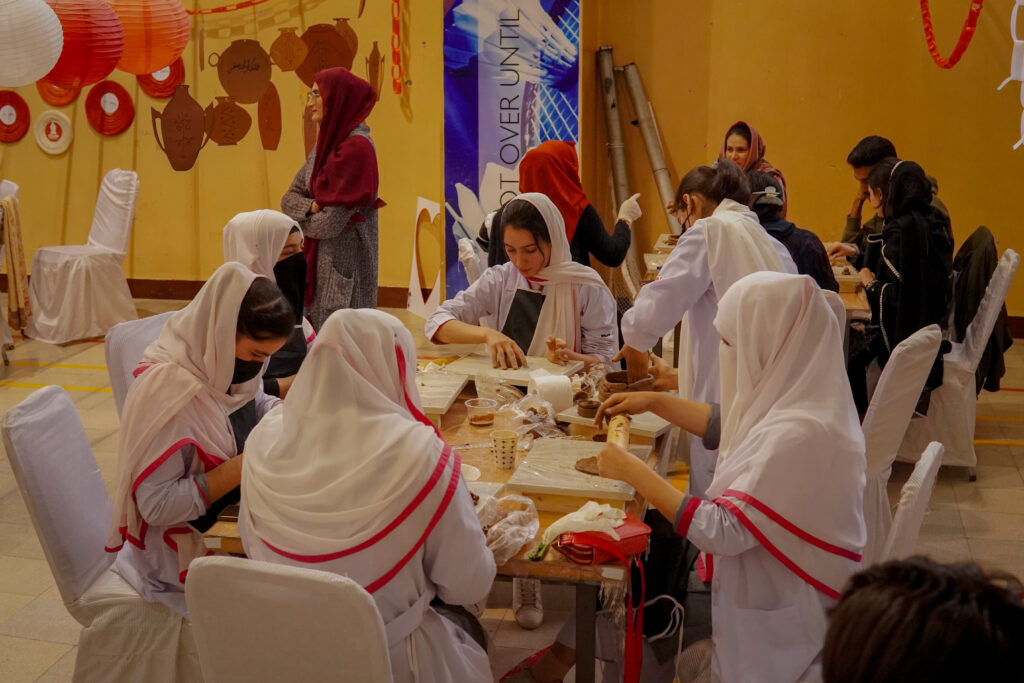
“In medicine, we give therapies to patients in the form or state of emotional disturbance. The same art is at work here,” she observes. For medical students attending our recent pottery workshop, this intersection is particularly illuminating—art is not just about aesthetics, but about healing and communication.
The Tactile Language of Clay
A striking example of art’s therapeutic potential is the medium of clay. Miss Mukhtiar highlights, “Relations of clay and medical is almost the same.” Clay is felt by the palm of our hands; our palms, with their sensitive tissues, can feel, absorb, and express. There are so many sensitive senses in our hands that come alive when we interact with clay.
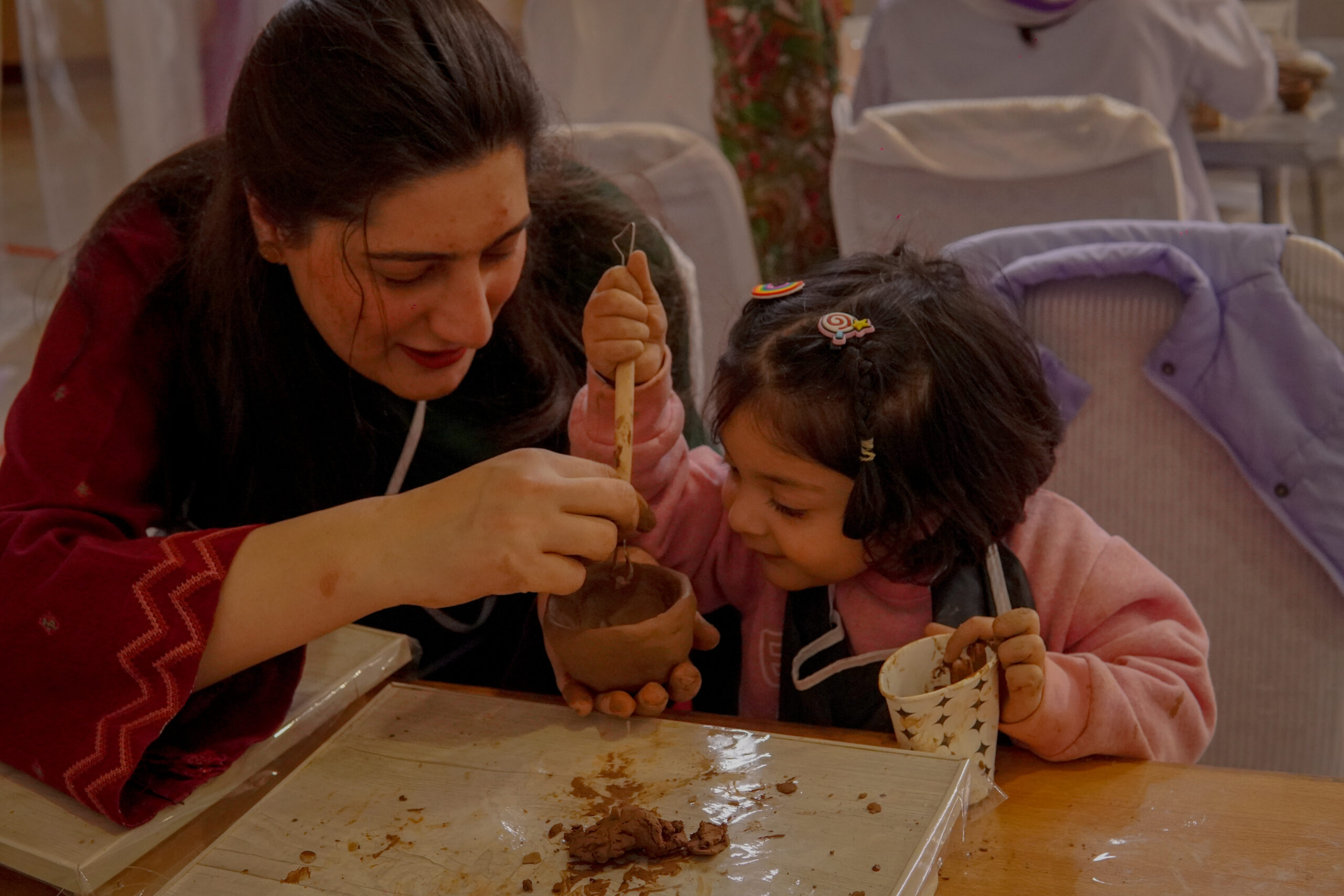
When we take clay in our hands, we press it and experience comfort and relaxation. We feel its coldness, its soft nature, and the smooth effects it bestows upon us. It is a gratifying sensation—one that affirms the powerful connection between tactile art and emotional well-being.
Molding Ideas and Emotions
Clay is also composed of various elements such as water, silica, and other natural materials that provide soothing effects. Essentially, clay is a material that can be molded into every shape and form, though it requires a little experience, concentration, and guidance. We can craft different shapes to express our ideas through clay which tells us what we are feeling and what we wish to share with the world.
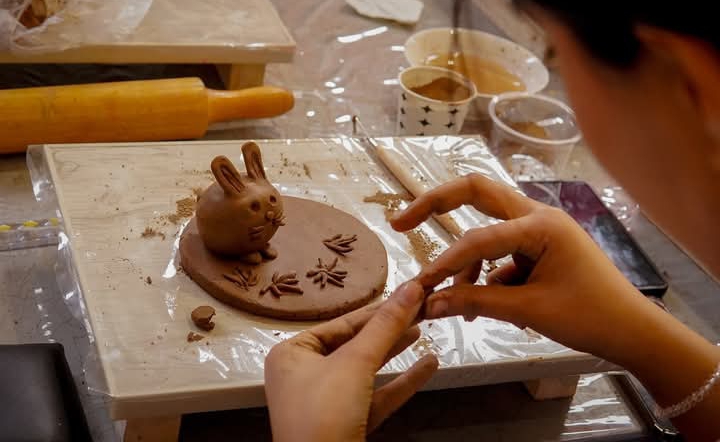
There are numerous methods available for working with clay including hand building, slip casting, pouring methods, and more. Each technique offers a unique way to embellish the pieces created, and it is advised that everyone experience this medium. Not only does it bring happiness, but it also boosts individual creativity and enables one to mold oneself in an aesthetic and transformative way.
-
The Order of Pen
- Blog
- November 6, 2023
From Ancient Agony to Modern Misfortune: Tracing the Evolution of Tragedy
What is a tragedy? “To be or not to be’’. In the postmodern world of…
-
The Order of Pen
- Book Discussion
- September 26, 2023
A GATHERING OF TOOP AND PESHAWAR CIRCLE: EXPLORING” THE DARK SIDE OF JOURNALISM” BY Dr. IRFAN ASHRAF AT PESHAWAR LIBRARY.
In the modern era of technological advancement, "The Order of Pen" (TOOP) shines brightly…
-
Kamran Khan
- February 25, 2025
Importance of Art in Other Fields: Clay as a Therapy
In today’s dynamic world, art remains a continuous process—one that transcends boundaries and belongs to every individual. It is not…
Reviving an Ancient Art: Pottery Workshop
- February 15, 2025
Alexandria, VA
- July 2, 2024
I Will Not Fall Softly Down
- July 2, 2024
Ta-wa-na
- July 2, 2024
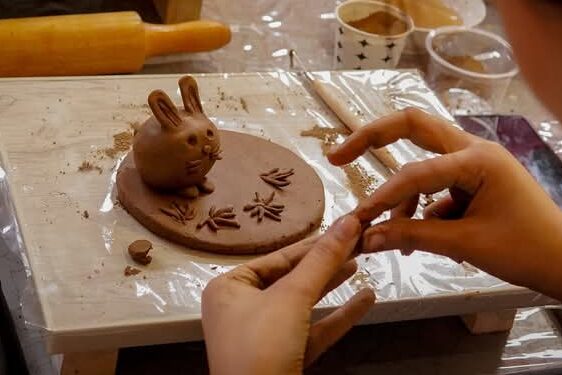

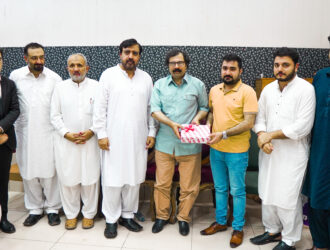









Leave a Reply